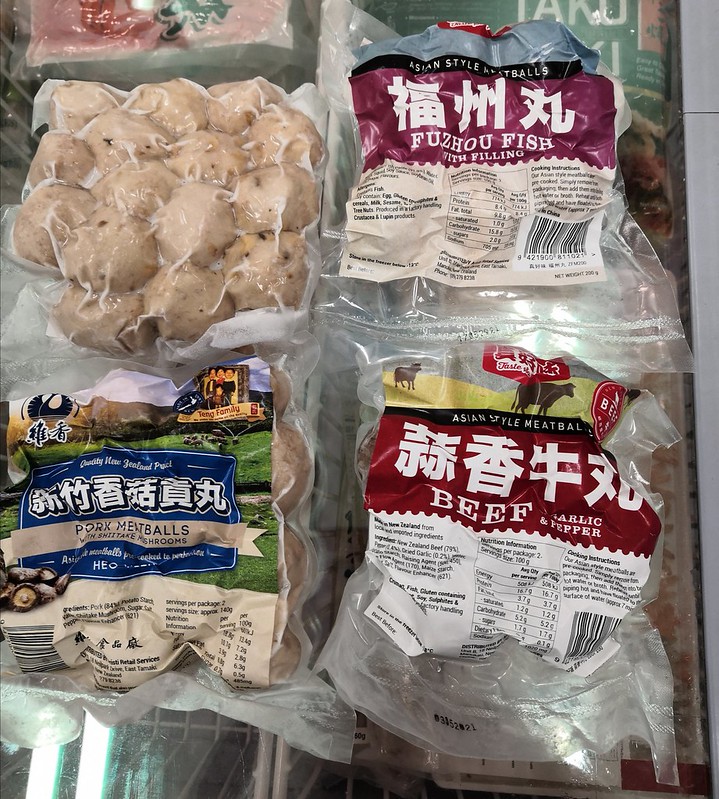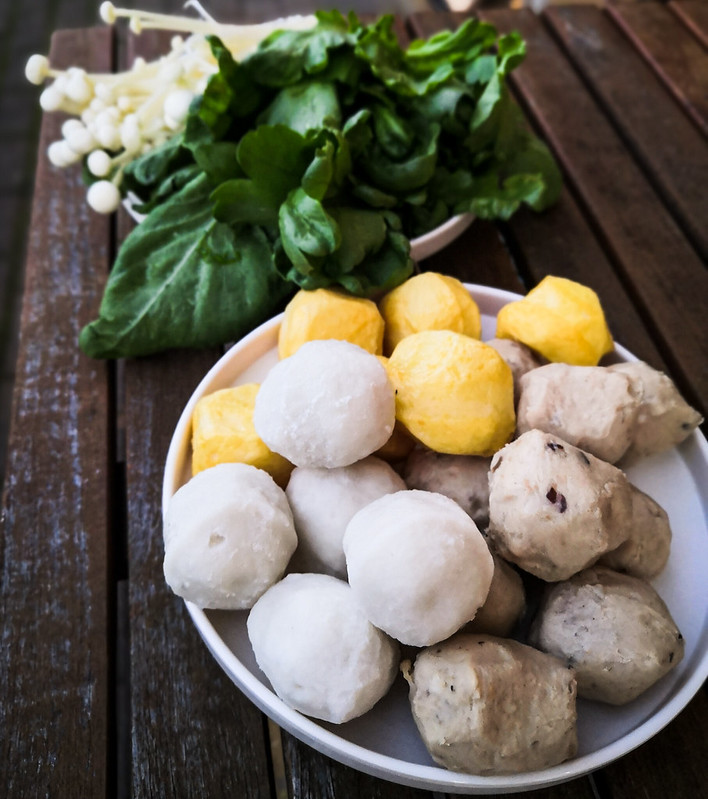There is nothing better than gathering around a warm fire and enjoying food with friends and family. Remember the good old camp fires and barbecue pits? You’ve most likely forgotten the banter, but the warm and happy feeling lingered long after the meal’s digested.
Steamboat has the same effect. It’s essentially a large pan of stock boiling continuously over either a camping style gas stove or an electric cook top. This is placed in the middle of the dining table, surrounded with plates and bowls of your favourite food ingredients, ready to be cooked by you.
It’s a longer meal, as you cook and eat at the table, along with good conversations and the makings of precious memories. The flavour of the soup develops over the course of the meal, as the essence of the bountiful meats, seafood and vegetables adds sweetness and depth to the simmering stock little by little.
You’ll find most cuisines have something similar to steamboat. Let me show you the steps to build your own Chinese style steamboat!
1. Heat source for cooking
You’ll need a mobile cooking surface. Camping style gas stoves are great as you can easily take them anywhere. The only thing you need to watch out for is having enough gas bottles to last the dinner. Usually a fresh one lasts the meal, but just have a spare in case.
We prefer an electric cooktop, as it is easier to clean up. Just make sure to place it where you can easily plug in to a power outlet close by.
2. Large pot, for cooking
Choose a large pan that has shorter handles, a flat bottom and wide surface area. This ensures a large cooking surface for even cooking. After all, many hands need to access the pan from all angles.
3. Ladles, chopsticks, tongs, eating and dipping bowls
These are the essentials: extra chopsticks or tongs to pick up the raw food, ladles to scoop and drain the cooked items before placing into your eating bowls. Don’t forget dipping bowls for your various sauces.
4. Soup base
The soup base can be a simple chicken stock. Remember this soup is likely to be consumed with noodles at the end of the meal, and the flavours will build up over the course of the cooking. Starting with a light flavour is perfectly fine and preferred.
Here are some examples:
- Chicken stock with leeks
- Corn pieces
- Winter melon
- Turnip and Wong bok
- Spicy chilli
- preserved vegetables
- Can of crushed and sieved tomato
- Dashi powder or kombu (if you are making Japanese shabu-shabu)
Now I’m always a bit impatient and wants to be able to start eating pretty soon after setting up the steamboat. If you are like me, you’ll want to start boiling your chosen stock base on your regular stove top for 20 minutes. This becomes the base of your steamboat, which will further develop in flavour when you add other things to cook at the table.
Have the kettle ready to boil more hot water during the meal, as you will need to periodically top up your cooking pot with hot water.
5. Protein
Typically there will be lots of choices, but whatever they are they should be aimed at fast cooking.
Thin meat slices are a must for us. They cook really fast, and adds a depth of flavour to the soup. They are usually in the frozen section of Asian supermarkets, in boxes or trays, precut in rolls or slices. Defrost slightly before the meal starts. We will have these usually:
- Beef
- Lamb
- Pork belly
Meat balls are another must – these Asian-style meatballs are unlike those you have with pasta. They don’t fall apart in boiling water and texture wise, they are well beaten and texture is best described as bouncy.
Meatballs we love:
- Pork and mushroom meatballs
- Beef meatballs
- Beef and tendon meatballs
- Fried fish balls
- Fish balls filled with minced mushrooms
- Crab meatballs
Seafood also adds flavour and we usually have a few prepared. The idea is to have some of everything.
- Prawns
- Scallops
- Fish slices
- Crab pieces
6. Carbs
Popular choices include udon, ramen and rice vermicille noodles. These are typically added in later in the meal. We sometimes have a few wontons or dumplings on hand too.
7. Vegetables
Now the choices are vast here. Pick 2 to 3 of your favourite Asian vegetables for this and cook it whenever you feel like it throughout the meal. Again the meats will have added so much flavour to the soup and your vegetables will taste extra delicious.
- Wong bok
- Turnip
- Choy sum
- Tong ho (pictured, it has a distinctive, slightly bitter taste)
- Spinach
- Leek
- Mushroom (different varietals, oyster, button, enoki, shiitake etc)
8. Soy products
Now these deserve their own heading! I’m talking about various food products made with soy beans.
Tofu:
Choose the hard tofu, so they stay intact in the steamboat. Cut them into slices 1 cm slices and cook briefly. Not only can you cook them from fresh, if you freeze some of the slices and then defrost them at room temperature before you cook them in the hot pot, you will create slices of “hive” which when placed in the hot soup, acts as a sponge to soak up all the delicious flavours.
Bean curd slices:
These fried bean curd sheets come in round rolls or rolled stacks. They cook super fast – 7 seconds – and comes out soft and chewy. Again this is a flavour soaker, perfect for steamboat.
9. Eggs
Eggs form part of the dipping sauce. We crack it into a bowl and whisk in chilli sauce, soy, sesame oil and some Taiwanese barbecue sauce which is the base of their famous noodle broths.
The egg also helps to cool down the cooked food slightly. If you are not a raw egg kind of person, do omit this. Some families like to crack the egg into the steamboat directly and make poach eggs too.
10. Sauces
Have a selection available for everyone’s tastes:
- Soy sauce
- Sesame oil
- Chilli paste
- Fresh chilli slices
- Taiwanese barbecue paste, an anchovy-based paste
- Fermented bean curd
- Hoisin sauce
- Chopped coriander leaves
- Roasted sesame sauce
There you have it! The 10 things you need to set up a Chinese style steamboat event. Enjoy!








